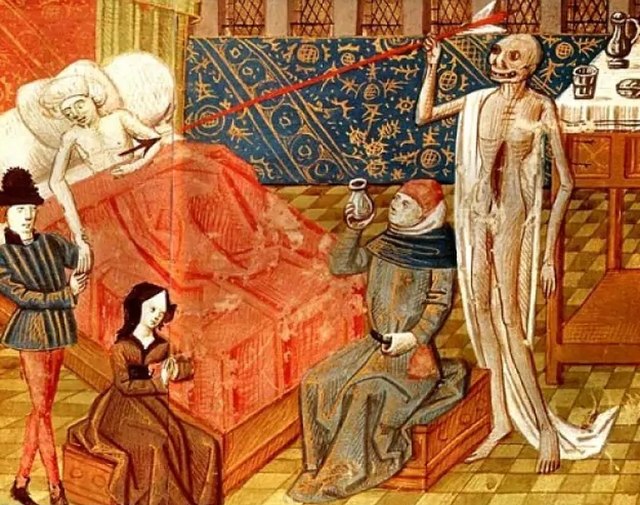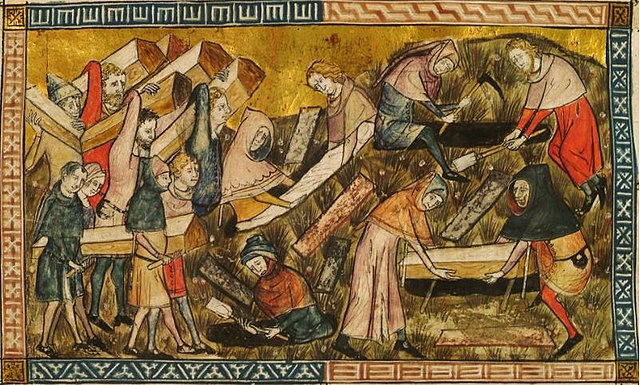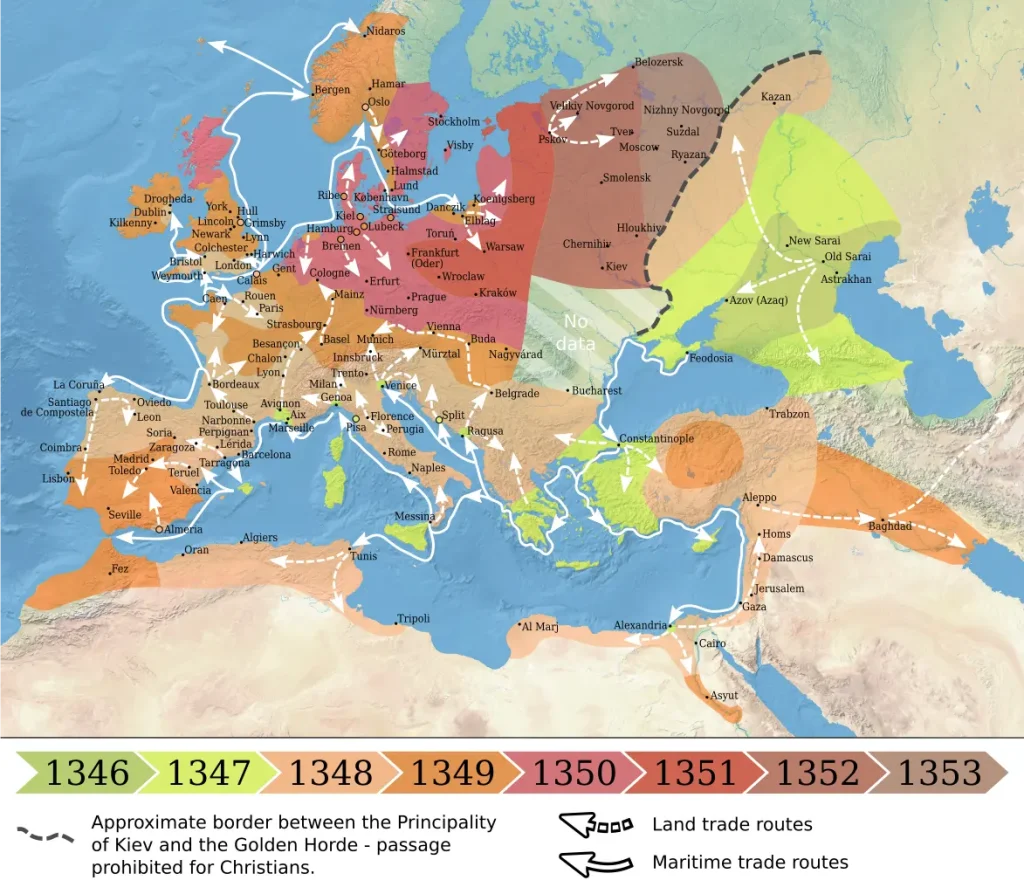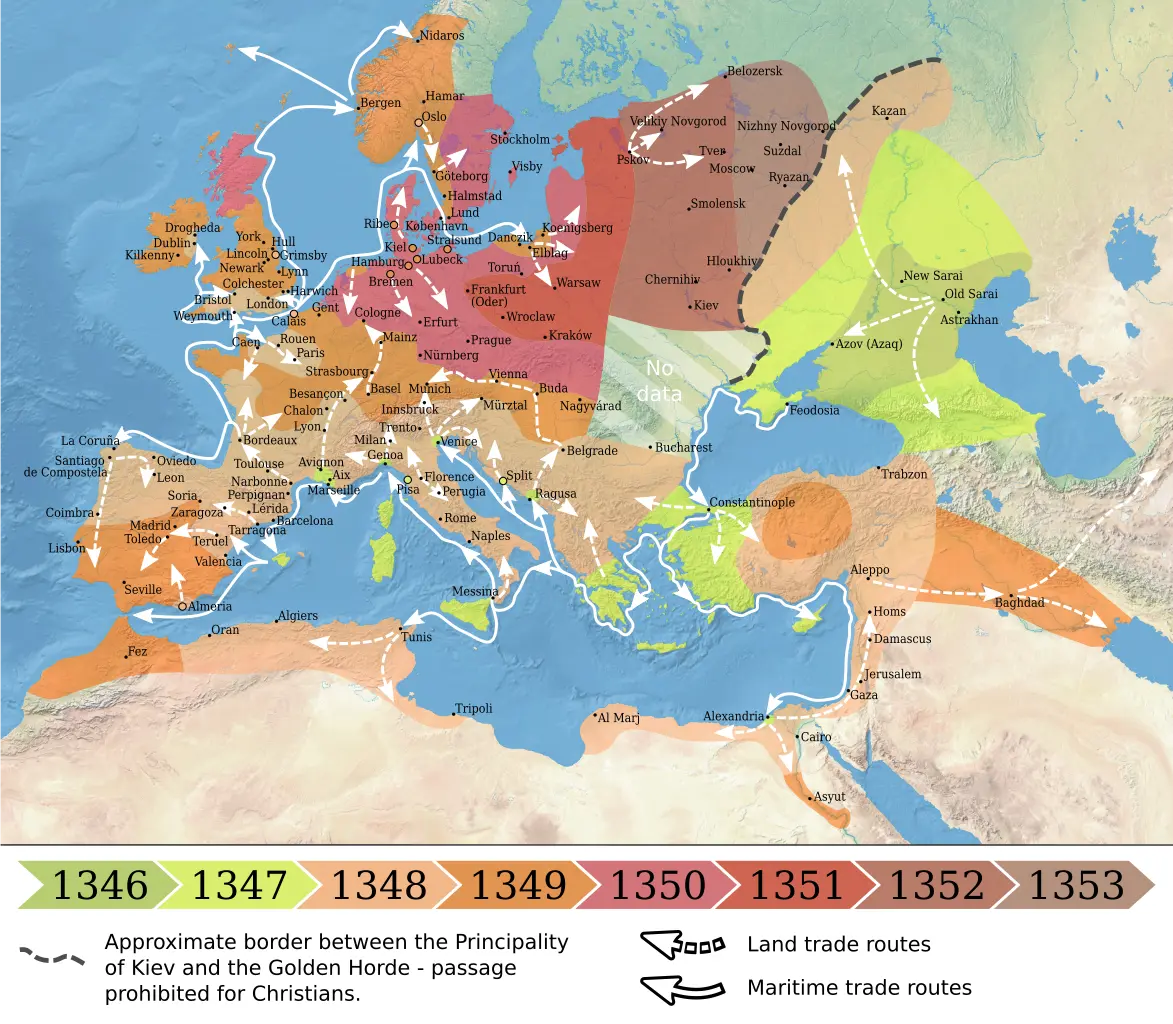The Black Death, which struck Europe in the mid-14th century, was one of the most catastrophic events in human history.
Estimated to have killed between one-third and one-half of Europe’s population, it drastically altered the course of history.

The disease, believed to be the bubonic plague, was spread by fleas that infested rats, which traveled aboard ships and across trade routes. As the plague spread from Asia into Europe, it caused widespread panic, with many turning to the Church, blaming divine wrath, while others resorted to extreme measures to try to ward off the disease.
The social and economic effects of the Black Death were profound.
Labour shortages, caused by the massive death toll, led to a shift in the power dynamics between landowners and peasants.
With fewer workers available, peasants were able to demand higher wages and better working conditions, contributing to the gradual decline of the feudal system. Many peasants left their villages to seek better opportunities, and the scarcity of workers led to the rise of a more cash-based economy, reducing the reliance on the feudal structure.

Politically, the impact of the Black Death was felt as well. Entire villages and towns were wiped out, leading to a decrease in tax revenues for monarchs.
At the same time, the Church, which had held considerable power, lost credibility as it failed to provide answers or cures, contributing to a rise in secularism in some regions.
In the long term, the aftermath of the Black Death helped lay the groundwork for social change, including the eventual rise of the Renaissance, as more people sought new ideas and opportunities.

Despite the devastation, the Black Death also indirectly accelerated advancements in medicine, public health, and societal reforms, as the need to understand and prevent future pandemics became more apparent.
So…after all that misery there was still hope and change…but it wouldn’t be for the last time as we all know!






